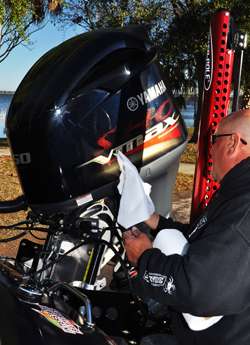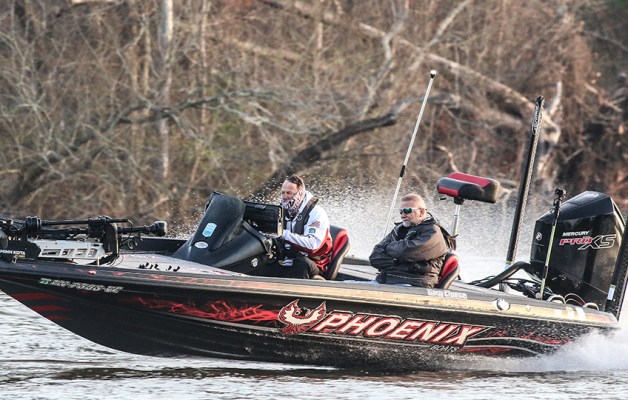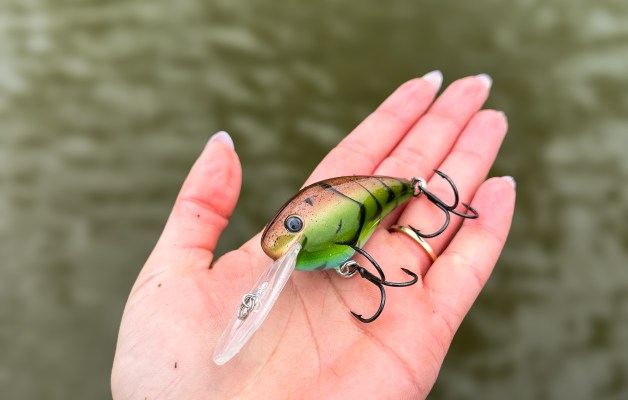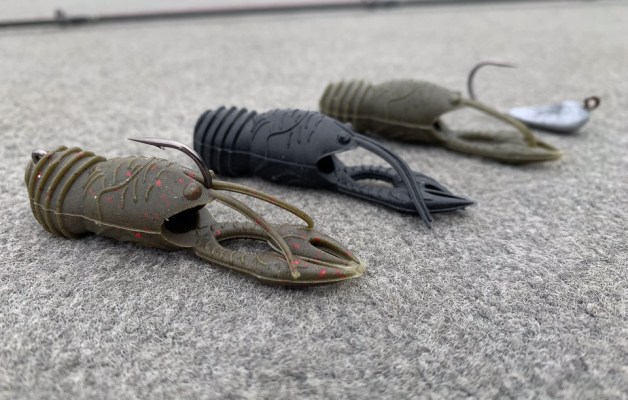
Wherever bass go, anglers follow … or at least they try to. As long as conditions are right, bass can be content in just inches of water. Your bass boat is not, but there are things you can do to get your rig to draft just a little shallower.
Rig it right
When burdened with a tournament load, Matt Herren's Skeeter is no lightweight. In it he carries four 80-pound batteries, two Power-Poles with accompanying pumps and fluid, 50 gallons of gas, an observer and a 250-horsepower outboard — not to mention a livewell full of water and fish. If he's fishing the final day of a tournament, go ahead and add a cameraman and all of the gear that his job entails.
While Herren tries to be smart about the baits he caries with him, he realizes that weight is at a premium in shallow-water fisheries.
"Any time I fish shallow, I try to balance the load in the boat," he said. "I try to equally distribute the weight because if you're too heavy in the front, you won't be as fast as you could be. But, if you're too heavy in the back, you won't draft as shallow as you would otherwise be able to."
As Herren pointed out, it's all about tradeoffs.
"You want to keep weight out of the nose so you can get on plane quickly and have the highest top speed your boat is capable of," he said. "It really is a balancing act in every sense of the phrase, but if I know I'm fishing super shallow, I'll sacrifice some of that top end to draft shallower by loading most of my gear in the forward compartments of my boat."
He sums this point up by saying that carrying the lightest load you can get away with is important. Be judicious with the tackle you carry. For example, you don't need 2-ounce flipping weights if you know you're going to be drop shotting all day.
Herren tries to minimize the tools and spare parts that he takes to redistribute the weight.
"Normally I'll carry a spare prop and trolling motor stuff, but when I know I'm fishing shallow, I try to minimize the weight I have with me," he said.
Need a push, Jack?
If you know you're going to be fishing super shallow, you'd better be packing a push pole.
"On some fisheries you can get stuck in the mud, and when you go to hop out, you're up to your neck in it. Ask me how I know," he said. "It's highly advisable to carry a push pole, unless you want to get out and wade around in the water with the alligators. The one I use is a Stiffy; it's made in Corpus Christi, Texas."
Herren uses a fiberglass pole. The alternative is aluminum, which can crumple or collapse with too much force.
Something else to consider is a jackplate. While it can help you get super shallow, it has applications beyond raising the height of your motor. A jackplate can help you fine-tune your rig for optimum speed, as well as make idling around in shallow water a breeze.
"I use an Atlas jackplate, and its main use for me is in shallow-water fishing. It's got a 6-inch vertical lift on it, which makes it easier to plane off in shallow water," he said. "It's worth its weight in gold any time that you're fishing super shallow."
Prowling shallow waters
Once you've gotten into your ultra-skinny honey hole, don't jump up and down with joy. In fact, try your best to minimize the amount of noise you make in the boat. Herren will go so far as to turn off his depthfinders so they aren't clicking right next to bass.
"Humminbird has technology that lets you turn off your transducers while keeping your water temperature, GPS and clock on," he explained. "This helps keep you as stealthy as possible."
He also recommends checking your trolling motor joints, bolts and mounts and fix any squeaks or creaks it may be making. The less you use your trolling motor, the better off you are in shallow water. To really minimize the need for a trolling motor, Herren has hung two Power-Poles on his Skeeter.
"Getting back into shallow water is the ultimate test of weighing risk versus reward," he said. "You're getting back in areas that don't see as much pressure, and the fish there may be a little more ready to bite."




